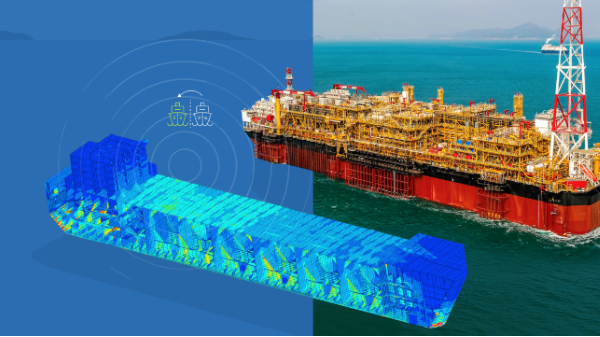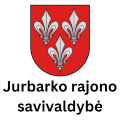
Image courtesy ABS
For more than a century and a half, class societies have relied on paper documentation to accomplish their mission. Paper has its uses, but the limitations of its functionality in a digital environment have long been apparent. It is no longer cost effective for designers to produce designs on a drawing board. Instead, they’re created in CAD programs and managed in complex product models.
As recently as the early 2000s, it was still not possible to leverage CAD on the shipyard platen, or drydock, or deck plate. But that started to change about a decade ago. And not just with additive manufacturing and robotic welding, but with people too – using tablets and mobility, smart devices, laser scanning and augmented reality.
The reason for this change is value. It is less expensive to produce only the 3D model, and not the drawings. Building from CAD is likewise less costly and even less risky than from drawings if you do it correctly.
This upstream disruption in design and construction is creating a need for change downstream. If the drawings used to support construction are never produced, how does the class plan review happen? Why not in the same 3D CAD system that was used to design new vessels in the first place?
Beyond design methods, the equipment and components themselves - software and firmware, controllers, and smart machines aboard a ship today – all have a digital element. Software is not developed on a clipboard and it has evolved to become vitally important to the performance of safety related equipment.
Beyond class engineering, what about class surveyors and survey? We rely on human senses – vision, hearing, even our senses of smell and touch. But we know that we can’t see or hear the software that is controlling a modern engine. For that, we’ve relied on testing.
A Better Way
The search for a ‘better way’ leads us to speculate if there were a way to put ourselves into the digital world in which that software exists.
Simulation can deliver all of the minimum requirements required by class in a virtual mode, and as of 2016, IACS’ unified requirements allowed this alternative for several important events. We believe that tests that previously may have posed hazards to the equipment may be reduced or eliminated with the use of simulation, and that we can take cost and risk out of commissioning by moving many of these tests to earlier in the process by doing them virtually. This is not intended to replace the human, but to supplement our capabilities in the digital domain.
It’s important to stress that simulation in this context does not mean 3D finite element analysis, computational fluid dynamics or other tools we use to solve boundary value problems. When we talk about modeling and simulation, we are talking about multi-physics tools that can leverage data, first-principles mathematical models and original software control systems themselves.
In a digital environment, these tools can be used for design purposes, for test and qualification and also for class verification. ABS recently released its Class Guide for Hybrid Electric Power Systems, including provisions for simulation-based testing as an alternative for the first time.
Today there are three primary use cases for modeling and simulation in the process as we see it from the class perspective. More are under development – techno-economic modeling for example – but today we think modeling and sim will help us with studies around decarbonization, validation of performance of complex software-driven systems including autonomous functions and virtual testing or commissioning of systems that are highly software affected.
Simulation sits at the center of a wheel containing familiar engineering topics like control system analysis, kinematics, power distribution systems and interface design. There are tools available on the market today that connect each of these disciplines to one another as well as to our more familiar 3D tools, like FEA and CFD. For that reason, we often call them ’multi-physics’ modeling or multi-physics sim.
Multi-physics modeling and simulation can deliver three things:
- It connects multiple engineering domains;
- It complements physical testing;
- And it adds rigor and confidence to the class process.
Decarbonization
There are several energy initiatives and technologies that could potentially contribute to the decarbonization of shipping; for example, improvements to the energy efficiency of ship designs will be required by the next phase of the IMO’s Energy Efficiency Design Index (EEDI). Closing the emissions gap between 2030 and 2050 will require a combination of physical and operational measures.
With all the available options - and especially with different technologies at different levels of technical maturity - there are challenges for designers offering advice, and for owners to make planning decisions.
The first is diversified selections: the portfolio of different energy saving technology options is large and works on different principles to reduce fuel consumption or emission levels. Alternative fuels have direct impact on the type of emission, which can be the most effective in carbon emissions reduction. Other technologies like hull design optimization and energy saving devices improve the hydrodynamic efficiency of the vessel. Technologies like solar and wind bring additional energy sources to the vessel for propulsion.
In order to consider the available technologies, it is important to have an evaluation method that can be scaled to consider the combined effect of different technologies or design or operational approaches. There is a lot of risk in making these decisions early in the process that will affect the owner for many years.
At ABS we have been working to develop a multi-disciplinary approach that connects the performance of the vessel in different aspects, which provides a systematic evaluation of the vessel’s performance. The decarbonization Simulation Model can be used to analyze the fuel savings and carbon footprint for a vessel considering tradeoffs between different design features and operational measures.
Using this tool, we can evaluate the impact of many combinations of technologies and help owners validate some of the claims being made by the designers – whether the designer is using modeling and simulation or not. We can include the timing of the upcoming regulations to see the vessels predicted performance against these requirements over time and can help the designers understand their constraints as well.
Software driven systems
In the second example, modeling and simulation can be used to verify software driven systems up to and including autonomous functions.
As vessels functions become more automated, the reliance on software is ever increasing. Validation of these critical software-driven decisions provides confidence that the system can operate effectively without the human intervention. However, emulating every scenario in the real world to validate the responses of software is becoming increasingly impractical.
There are scenarios that may pose a risk to equipment, personnel and the environment; involving uncontrolled conditions such as weather and sea state or that are simply too costly to recreate or too obscure to contemplate.
Simulation and virtual testing allow for designers to consider scenarios that would otherwise be impossible to recreate in the real world, and conduct testing of these software driven components faster than they could in real time. As these technologies mature, we will see more and more evaluation of these components and systems in the digital domain.
Testing and commissioning
We should already know that testing of system automation is an essential practice today. But it is an expensive process and economically risky, as it often cannot happen until late in the build cycle when a system is installed and connected. This makes the concept of virtual testing to supplement physical testing a very attractive concept.
In simulation-assisted automation testing, the application is connected to a dynamic plant system model which can be used to verify the functionality of the automation system before connecting it to the actual process.
This has several benefits when compared to traditional testing methods; in particular the whole automation application can be tested with real system-like responses before installation.
These tests can also include scenarios which would be impossible to carry out at the site because of high risk or cost. Tests made beforehand can significantly reduce the time required for the site acceptance test or onboard testing.
Closing the Loop
Modeling and simulation also have a role to play in one the most used – perhaps overused – terms of the digitalization revolution: the digital twin.
In an industry increasing employing streaming data and machine learning to better understand the real-time condition and performance of a vessel, this approach could help close the loop on the digital twin.
What I mean by that is that modeling and simulation can be used to train the machine learning algorithms in ways that are otherwise far too expensive to test for accuracy. Modeling and simulation can likewise accept streaming data to validate the accuracy and performance of the process itself, closing the verification loop and giving us confidence that the data from the digital twin is accurate and actionable.
Given the increasing amounts of time and resources being expended on understanding the condition and performance of remote assets, the prospect that a true digital twin could be realized using modeling and simulation is an exciting indication of this technology’s potential.
Patrick Ryan is Senior Vice President – Engineering and Technology for ABS. He is responsible for global engineering, digital engineering, rules and software, research and development, and the Global Ship Systems Group.
The opinions expressed herein are the author's and not necessarily those of The Maritime Executive.
Source www.maritime-executive.com




.jpg)






